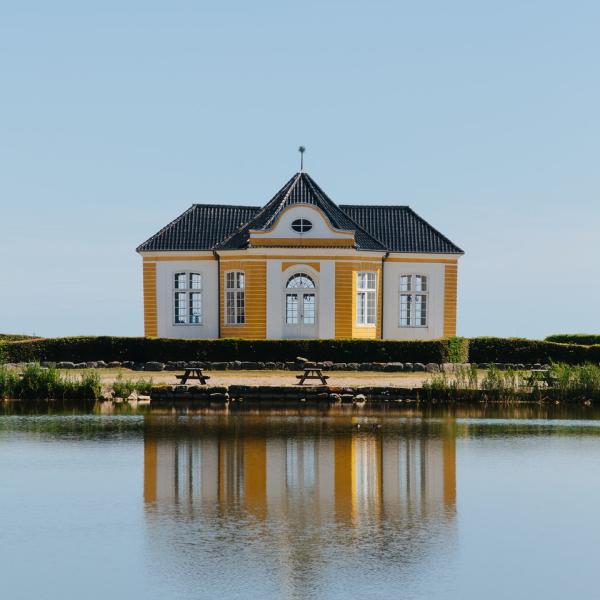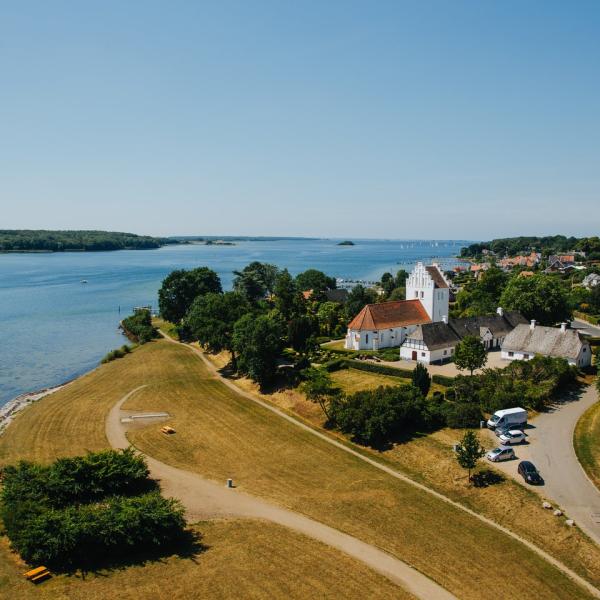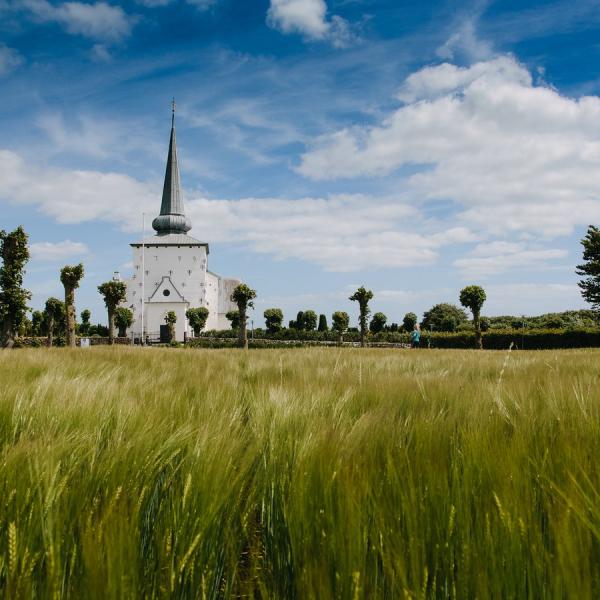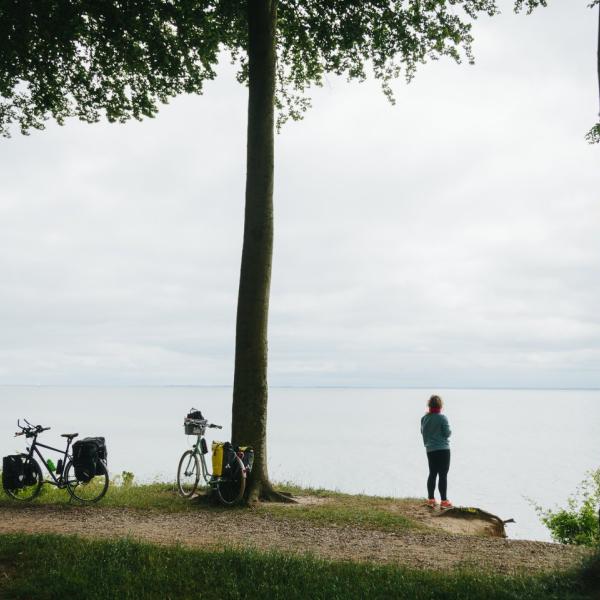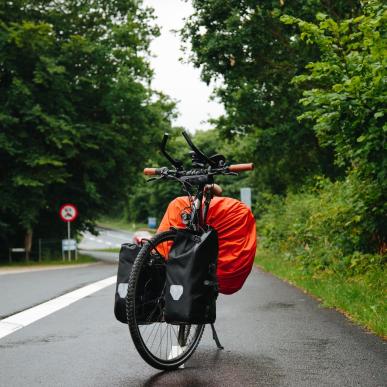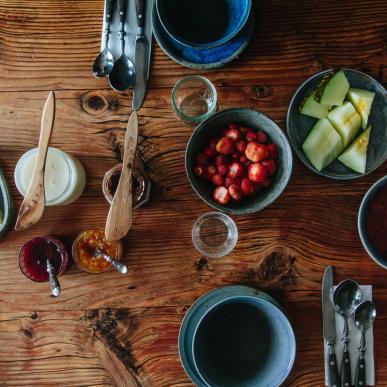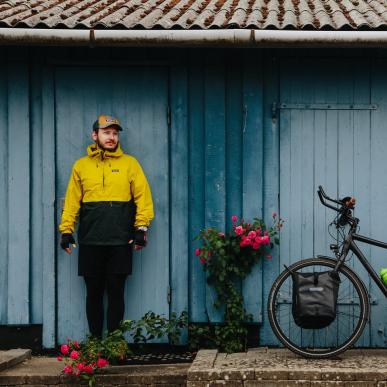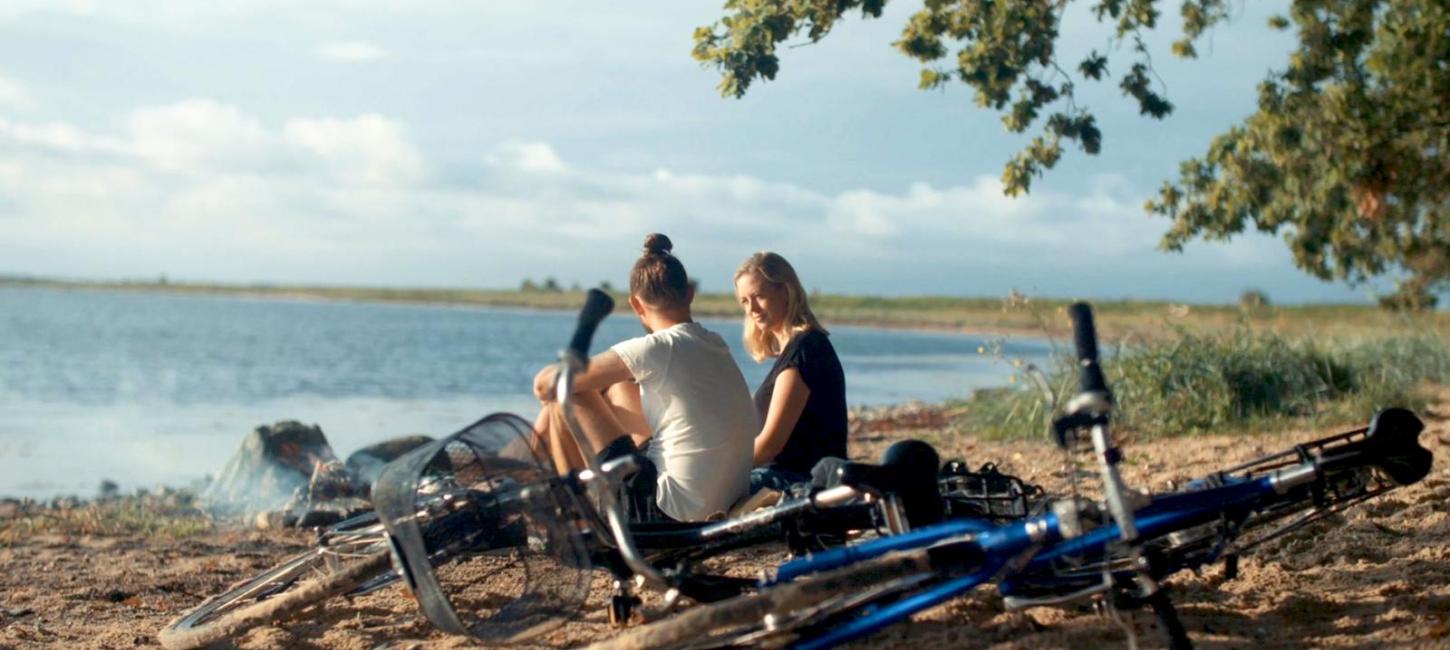
Cycling the Baltic Sea Cycle Route: 820km of hygge on two wheels
This isn't your average cycle path. The Baltic Sea Cycle Route runs through some of Denmark's most enchanting countryside, along country lanes, beside sandy beaches and across peaceful islands. Discover Denmark from the seat of a bike as you navigate our inspiring landscape.
When was the last time you saw a pod of dolphins from the seat of your bike? Spent an afternoon in a medieval castle? Or tasted delicious cheese fresh from the seller as you walked around a weekly market?
The 14-stage journey of the Baltic Sea Cycle Route is uplifting and full of memory-making potential. It's both the perfect way to switch off from everyday life and a unique way to enjoy all of Denmark. Experience nature, lifestyle, history and culture, with a route that winds around historic manors and medieval castles, pretty market towns and unparalleled wildlife experiences.
Follow us on a route through the very best of Denmark.
Highlights of the Baltic Sea Cycle Route
Whichever stage you tackle, you'll find castles and manors, natural wonders and unique small towns that will enchant and inspire you.
Where to start
The route is broken down into 14 stages and is laid out in a figure of eight shape, allowing you to choose either an eastern or a western loop. Both routes are highly accessible. If you are driving from Germany, you will reach the Western Loop first. If you fly into Copenhagen, the Eastern Loop is the closest. The downloadable guide below takes you through the route stage by stage.
Practical information about the N8
Where can you hire a bike in Denmark? Can you take a bike on a train? The answers to these questions and more are all below.
Frequently-asked questions
Cykling
Det kunne ikke være nemmere at cykle i Danmark, og derfor er både cykling som sport og cykelferier populære.
Regler for cyklister
Du kan læse mere om specifikke færdselsregler for cyklister og din trafiksikkerhed på cyklen på cyklistforbundet.dk.
Skiltede cykelruter
Der er omkring 11.000 km skiltede cykelruter i Danmark, som gør det nemt at finde rundt. Du skal bare kende din rutes navn, nummer eller logo og så følge det. Ruterne krydser flere steder hinanden, så du kan sagtens komponere din egen tur, sammensat af flere forskellige ruter. Det er sikkert at cykle på de danske cykelruter, for ruterne følger for det meste små veje med ringe trafik, uforstyrrede skovveje, specielt anlagte cykelveje, cykelstier og nedlagte jernbanespor.
De nationale cykelruter
I Danmark er der 11 nationale cykelruter med et samlet ruteforløb på over 4.000 km. De nationale cykelruter er skiltede med små, kvadratiske skilte med cykelsymbol og hvidt rutenummer i rødt felt på blå baggrund (rute 10 på Bornholm dog på grøn baggrund). De ulige rutenumre 1-9 går nord-syd, mens de lige numre 2-8 går øst-vest. Dertil kommer to rundstrækninger, Bornholm Rundt (rute 10) og Limfjordsruten (rute 12).
Margueritruten
Denne rute er egentlig en bilrute, men idet den køre igennem nogle af de flotteste egne af Danmark på små veje, kan ruten fint bruges til en cykeltur også. Ruten er over 3.600 km lang, så der er nok af flotte steder at cykle hen.
Regionale og lokale ruter
Udover de nationale cykelruter er der også et net af regionale og lokale cykelruter i Danmark, der hver især har deres egen skiltning. De regionale ruteskilte er opbygget på samme måde som de nationale - dog med hvide rutenumre fra 16-99 på blå bund. De lokale ruteskilte er opbygget på samme måde som de regionale - men med rutenumre fra 100-999. Du kan kontakte det lokale turistbureau for en oversigt over regionale og lokale ruter. - Til de lokale ruter hører også "Panoramaruterne", 26 sløjfer på de nationale cykelruter "Vestkystruten" og "Berlin-København ruten", som er skræddersyet til dig, der foretrækker at bo et fast sted og tage på kortede dagture ud derfra. Panorama cykelruterne er rundture, så du kan starte hvor som helst på ruten.
Countryside byelaws
Everyone can go where they like in the Danish countryside as long as they are considerate of animals, plants and other people. It is your responsibility to be safe.
Here are some of the most important rules:
- You are allowed in public woods and forests 24 hours a day, all year round.
- You are only allowed in private woods and forests from 6 am until sunset, and only on roads and paths.
- All cycling is to be carried out on roads and trails, regardless of public or private land.
- Foraging for private use is allowed.
- It can be difficult to see if a wood or forest is publically or privately owned. Look for signs and follow the rule of thumb that red posts are used in public forests, and green ones are used on private land.
- Entry to a forest can sometimes be limited during the hunting season.
- You are allowed on uncultivated land (meadows, cliffs, coasts and beaches etc) on foot while pushing your bike.
- If you want to stay in a public forest /uncultivated land, you have to be at least 50 meters from the nearest building. If you want to stay on private ground, you have to be at least 150 meters from the nearest building.
- You can check further rules on: The Danish Nature Agency
